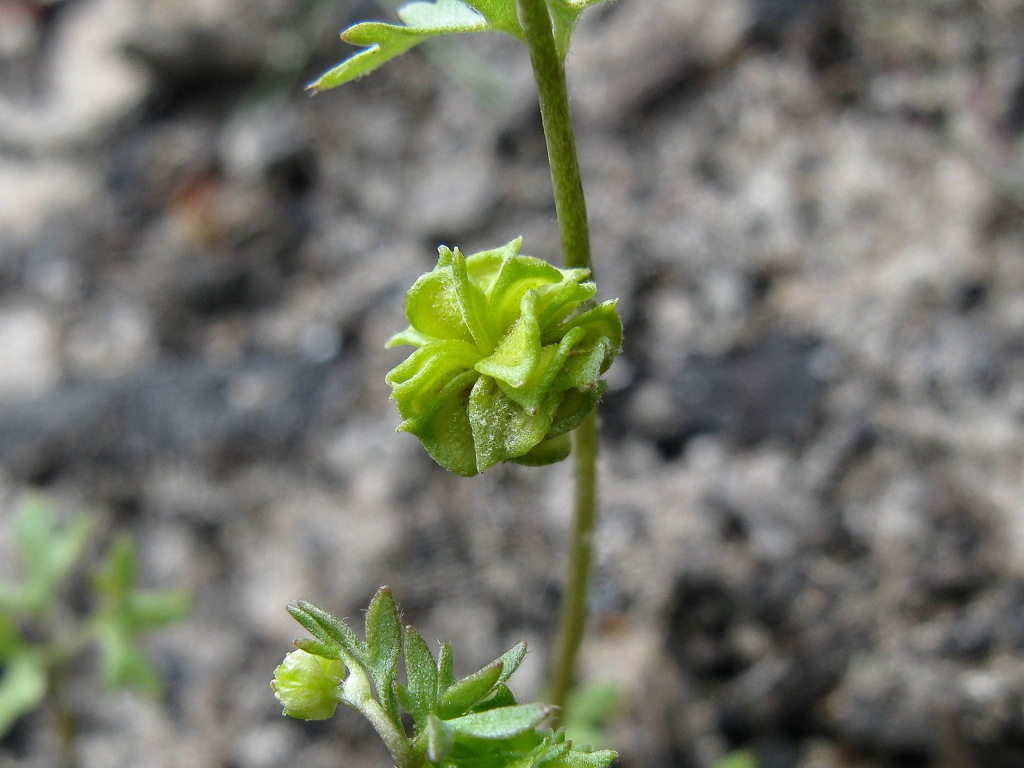Ranunculus pentandrus var. platycarpus
(F.Muell.) H.Eichler Common AvensAnnual, stems spreading to erect, 5–40 cm long, subglabrous to pilose. Leaves of juvenile plants broadly 3–5-lobed, adult leaves usually biternate to triternate, the lobes lanceolate to narrowly oblanceolate, entire or toothed, usually c. 1–2 cm long and wide overall; petioles mostly 1–5 cm long. Flowers 2–3 mm diam., sessile or subsessile in axils, pedicels elongating (to c. 2 cm) in fruit; sepals 3–5, elliptic to obovate, c. 2 mm long, pilose on back; petals 1 or 2, obovate to spathulate, slightly shorter than sepals, white; nectary attached at or slightly above middle, lobe semicircular to rhombic, free above midway, c. 0.2 mm long; stamens 3–5. Achenes usually 10–30, c. orbicular, 2.5–3.5 mm diam., almost flat, usually warped at maturity, with small tubercles scattered over the central half of the faces; beak triangular, c. 0.5 mm long; receptacle glabrous. Flowers Jul.–Dec.
LoM, MuM, Wim, GleP, VVP, VRiv, MSB, RobP, MuF, NIS. Also WA, SA, Qld, NSW. Virtually confined to lake margins and seasonally flooded sites of the northwest, with outlying occurrences near Charlton and Willaura (possibly via accidentally transported seed at these latter sites).
Walsh, N.G. (1996). Ranunculaceae. In: Walsh, N.G.; Entwisle, T.J., Flora of Victoria Vol. 3, Dicotyledons Winteraceae to Myrtaceae, pp. 35–63. Inkata Press, Melbourne.
 Spinning
Spinning



